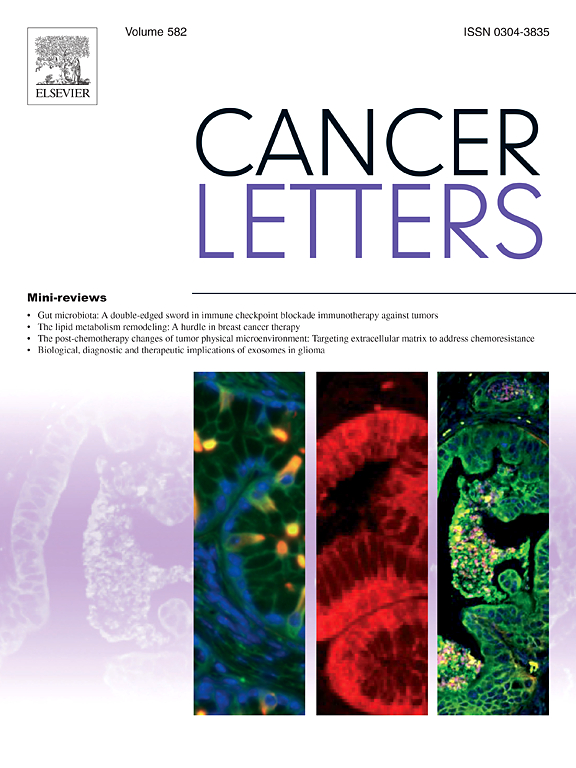Malignant tumors in vagal-innervated organs: Exploring its homeostatic role
IF 9.1
1区 医学
Q1 ONCOLOGY
引用次数: 0
Abstract
Cancer remains a significant global health challenge, with its progression shaped by complex and multifactorial mechanisms. Recent research suggests that the vagus nerve could play a critical role in mediating communication between the tumor microenvironment and the central nervous system (CNS). This review highlights the diversity of vagal afferent receptors, which could position the vagus nerve as a unique pathway for transmitting immune, metabolic, mechanical, and chemical signals from tumors to the CNS. Such signaling could influence systemic disease progression and tumor-related responses. Additionally, the vagus nerve's interactions with the microbiome and the renin-angiotensin system (RAS)—both implicated in cancer biology—further underscore its potential central role in modulating tumor-related processes. Contradictions in the literature, particularly concerning vagal fibers, illustrate the complexity of its involvement in tumor progression, with both tumor-promoting and tumor-suppressive effects reported depending on cancer type and context. These contradictions often overlook certain experimental biases, such as the failure to distinguish between vagal afferent and efferent fibers during vagotomies or the localized parasympathetic effects that cannot always be extrapolated to the systemic level. By focusing on the homeostatic role of the vagus nerve, understanding these mechanisms could open the door to new perspectives in cancer research related to the vagus nerve and lead to potential therapeutic innovations.
求助全文
约1分钟内获得全文
求助全文
来源期刊

Cancer letters
医学-肿瘤学
CiteScore
17.70
自引率
2.10%
发文量
427
审稿时长
15 days
期刊介绍:
Cancer Letters is a reputable international journal that serves as a platform for significant and original contributions in cancer research. The journal welcomes both full-length articles and Mini Reviews in the wide-ranging field of basic and translational oncology. Furthermore, it frequently presents Special Issues that shed light on current and topical areas in cancer research.
Cancer Letters is highly interested in various fundamental aspects that can cater to a diverse readership. These areas include the molecular genetics and cell biology of cancer, radiation biology, molecular pathology, hormones and cancer, viral oncology, metastasis, and chemoprevention. The journal actively focuses on experimental therapeutics, particularly the advancement of targeted therapies for personalized cancer medicine, such as metronomic chemotherapy.
By publishing groundbreaking research and promoting advancements in cancer treatments, Cancer Letters aims to actively contribute to the fight against cancer and the improvement of patient outcomes.
 求助内容:
求助内容: 应助结果提醒方式:
应助结果提醒方式:


